Dunsborough Park: A home for sale next door to Wisley with gardens that look like they've been created by the RHS
Dunsborough Park is an exceptional house, but it's 100 acres of gardens are far beyond even that, with some of the finest privately-owned grounds in Britain. Now, they're looking for a new owner.
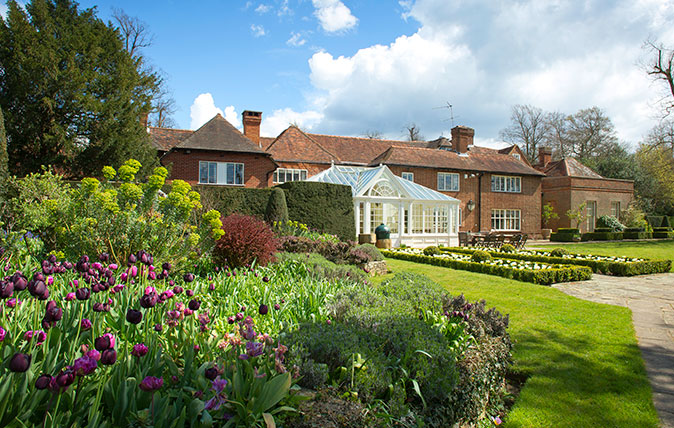
How rare a find on the open market is a place like Dunsborough Park? We've been pondering this question for a few days now.
After all, you could spend months looking for an 18th century house which has been cared for and sympathetically extended by generations of different owners. You could spend years looking for an estate of 100+ acres within a stone's throw of the M25. And you could spend a lifetime looking for a place whose gardens are so unfeasibly magnificent that you can imagine members of the Royal Family seeing the pictures on this page, and then calling their gardener in to answer some awkward questions about why their own plots aren't in the same category.
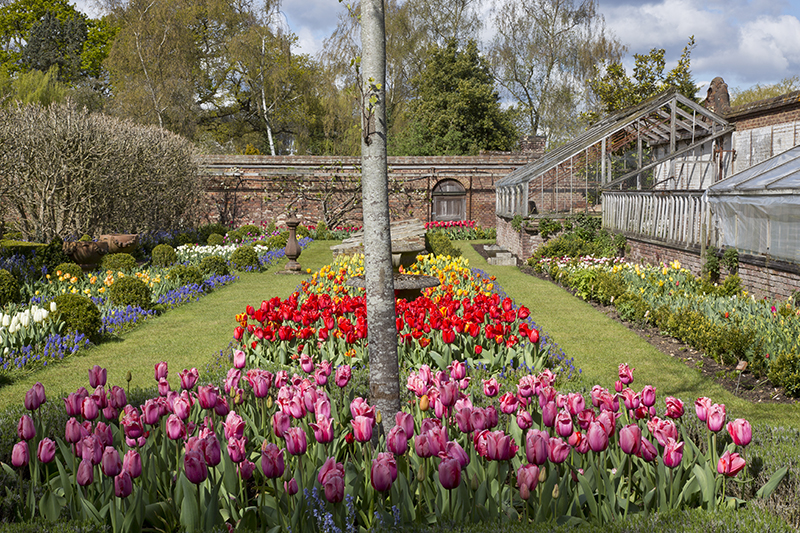
Dunsborough Park's recorded history goes back to the 12th century, but the house on the current site was originally a 17th century farmhouse. Over the succeeding centuries – and particularly in the 19th century, when owned by the Onslow family – a vast amount has been added and modified, and modified and added.
So much has been added, in fact, that those original farmers would not recognise the home now on sale via Savills for £17 million any more than they'd be able to harness up one of the gleaming metal machines parked in the driveway and use it to plough their fields.
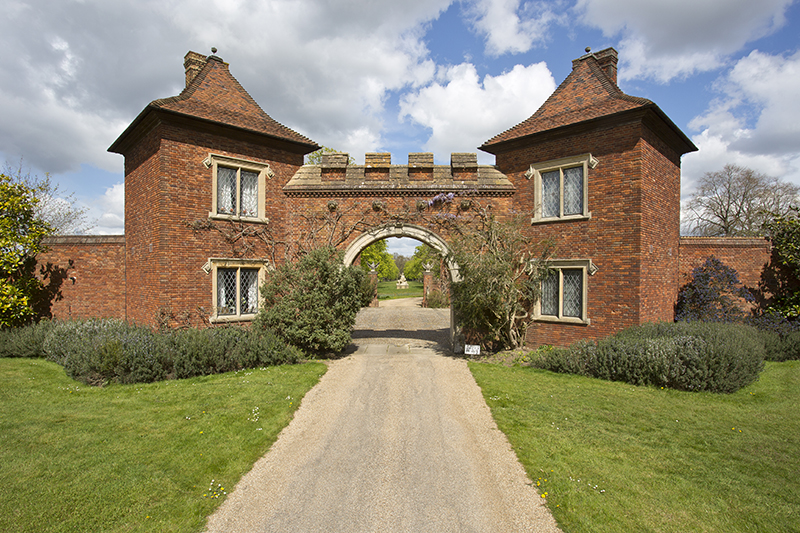
The eight-bedroom house itself has some magnificent, striking features within, particularly as regards the principal reception rooms.
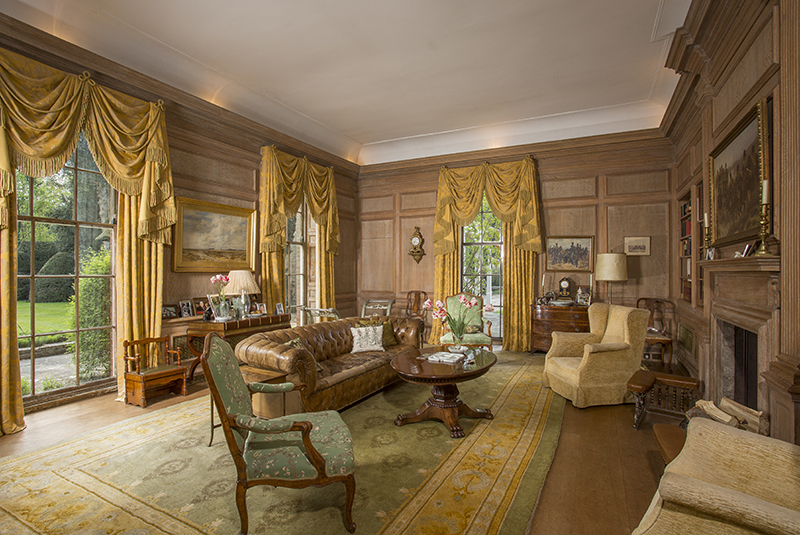
There's a drawing room with floral silk and cotton wall covering, marble fireplace and full height windows; the dining room is just as grand, with its marble fireplace and hand-painted hessian wallpaper imported from Italy.
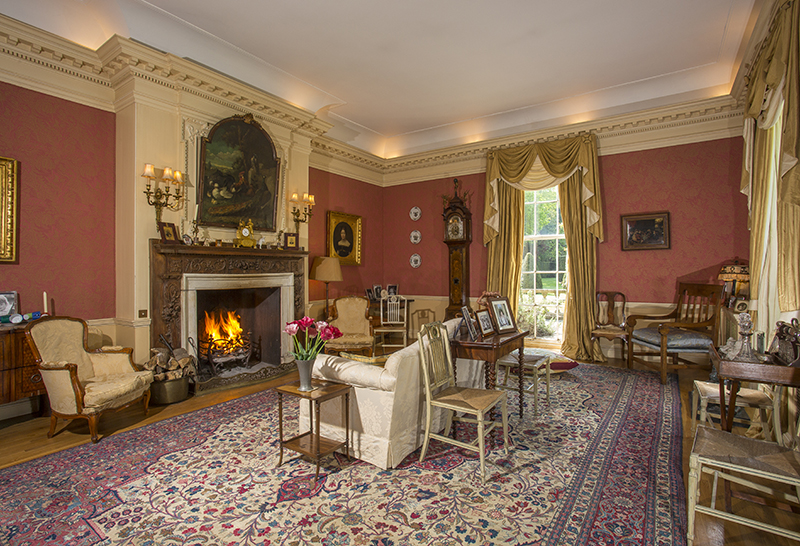
There are traditional features including exposed beams, while more modern touches include a conservatory. It's the newest of Dunsborough's additions, having been added by the current owners as a perfect spot from which to overlook the garden and parkland.
Sign up for the Country Life Newsletter
Exquisite houses, the beauty of Nature, and how to get the most from your life, straight to your inbox.
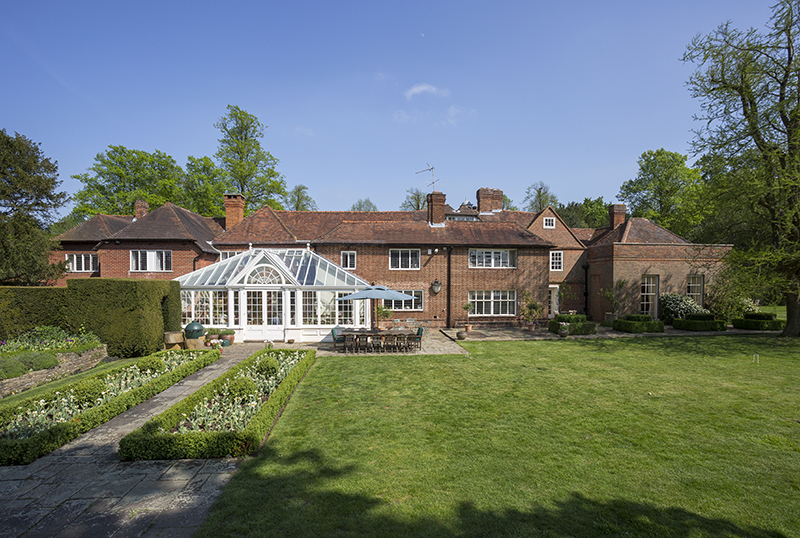
We can see why they added it with that in mind, for the garden and parkland in question are truly staggering. Dunsborough's borders run within yards of the borders of RHS Wisley, and from the looks of things you'd be forgiven for thinking that a naughty former owner somehow pinched a large chunk of the latter while the custodians of the Royal Horticultural Society's pride and joy were on holiday.
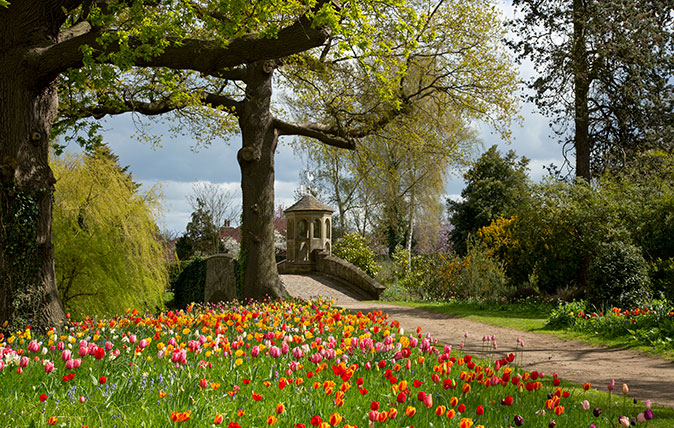
Dunsborough's gardens owe a great deal to Oliver Simmonds, an MP who bought the property in the 1930s. It was he who had the Tudor style gatehouse at the entrance built, as well as the octagonal pumphouse, the bridge, pavilion, greenhouses and ha-ha.
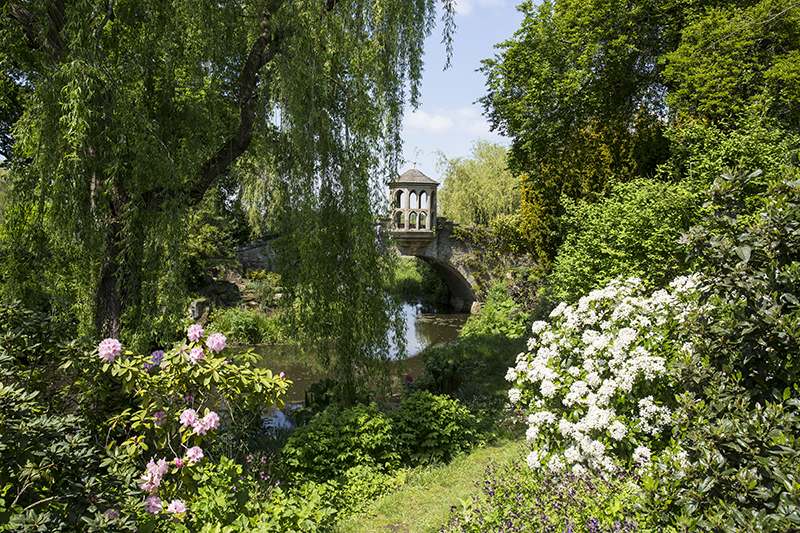
After the war, however, the gardens fell into decline until 1994 when the current owners, the Sweerts (or Baron Dolf and Baroness Caroline Sweerts de Landas Wyborgh, to give them their full titles) bought the place.
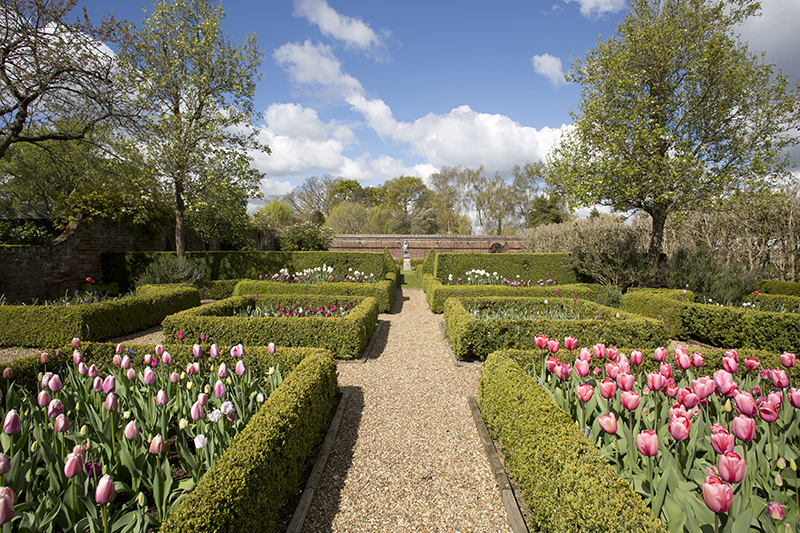
They brought in garden designer Penelope Hobhouse and landscaper Simon Johnson, and later another gardener in Rupert Golby, who over the years have made the gardens what they are today. Our gardens editor Kathryn Bradley-Hole visited in 2011, and wrote this afterwards:
"Baron Dolf and Baroness Caroline have spent nearly two decades and a great deal of investment in creating a series of well-proportioned garden enclosures, each with its own character’. The result is a pleasing blend of the Dutch aesthetic for straight vistas, formal parterres and restrained avenues with a more English sensibility for floral abundance" - Kathryn Bradley-Hole, Country Life, June 8, 2011
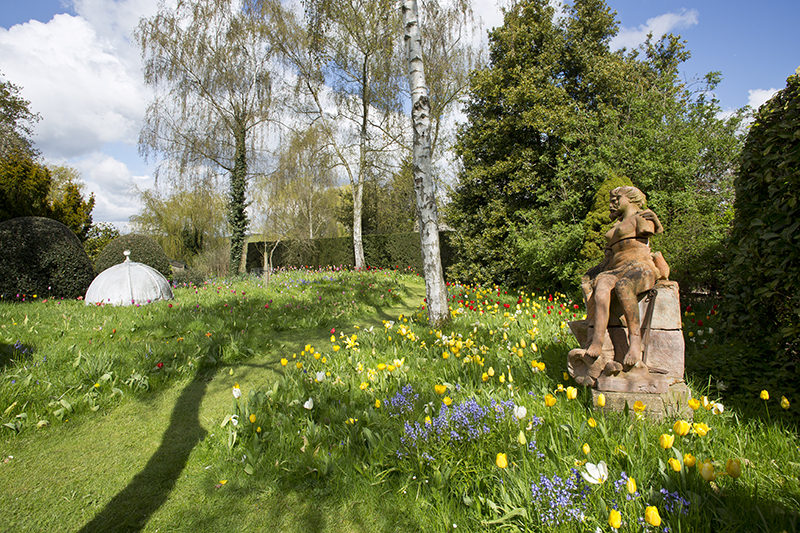
The grounds now include a series of small intimate areas, dividing the garden into rooms and creating long vistas; there are water gardens, featuring a series of descending ponds leading to the Ockham Mill Stream, with the bottom pond crowned by a magnificent folly bridge. And there are hundreds of statues – as you'd expect, given that Dolf is a garden statutary dealer.
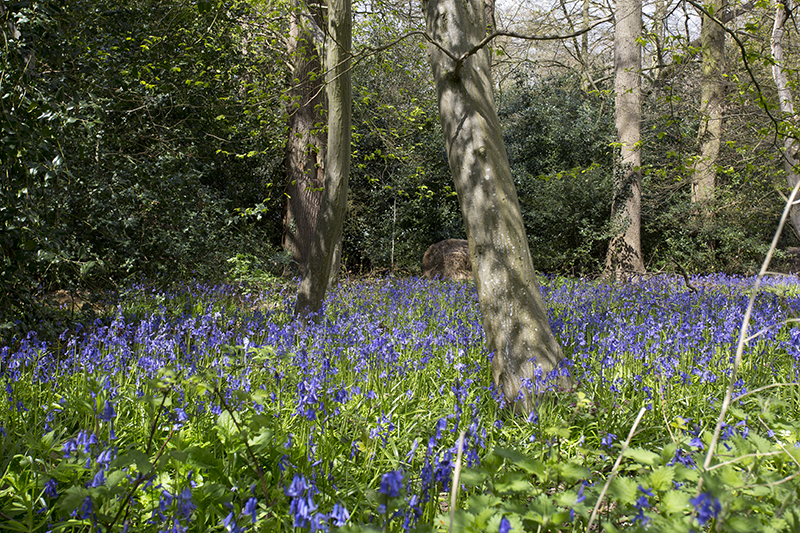
Both Baron Dolf and Baroness Caroline have been keen to open the gardens to the public, running open days both as part of the NGS scheme and of their own volition, including the annual Festival of Tulips in April.
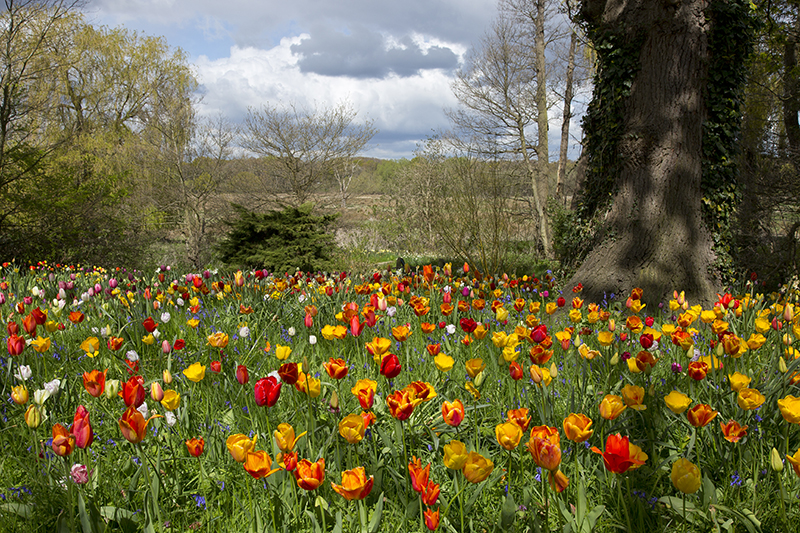
Beyond those gardens, the estate contains far more: 10 further cottages, tennis courts, garages and at one end of the house there is a space referred to as the 'concert hall', complete with high ceiling and viewing gallery.
It's originally believed to have been built as a Fives court, but has also been an indoor swimming pool – the original foundations are still in place, should the new owner wish to return it to more sporting use.
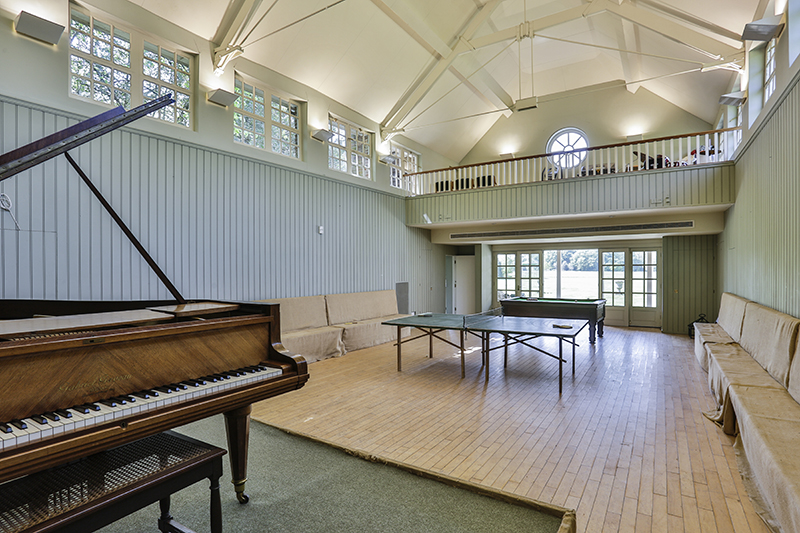
And speaking of sporting pursuits, it's also a perfect property for horse lovers: among the outbuildings are excellent equestrian facilities, including 17 boxes, 2 foaling boxes, a manège and paddocks.
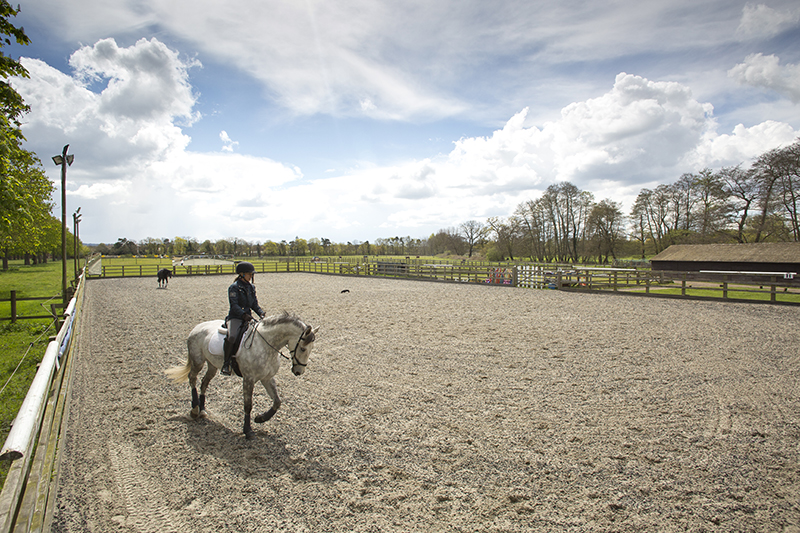
Paul Finnegan of Savills' Country House department is confident that a buyer will be found for what he describes as a "striking estate", citing in particular the range of top-quality educational establishments nearby. Dunsborough, he says, "is surrounded by some of the country’s top schools – essential criteria for the discerning family-focused grand country home owner."
As good as the location and house is, though, it's the grounds on offer which Mr Finnegan believes will be one of the key factors: "We expect interest from buyers who will be able to appreciate and preserve these beautiful grounds as well as being able to enjoy the fabulous equine facilities on offer."
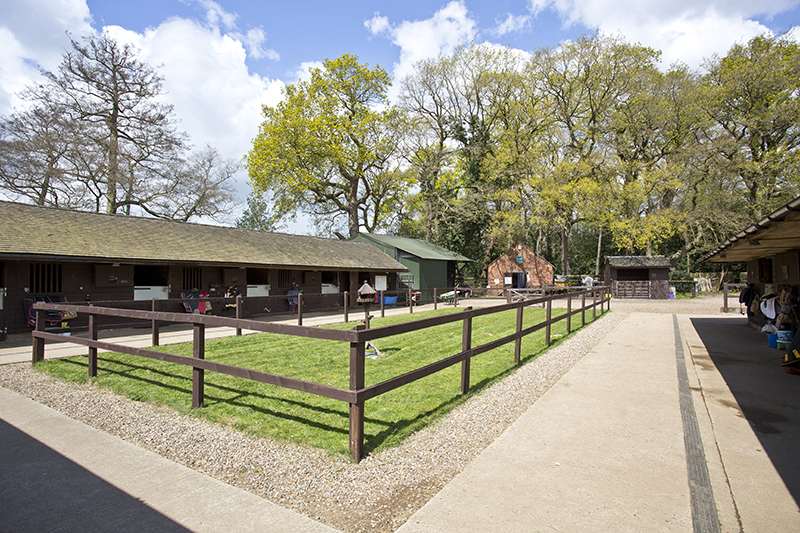
Dunsborough Park is for sale via Savills, priced at £17 million – see more pictures and details.
Toby Keel is Country Life's Digital Director, and has been running the website and social media channels since 2016. A former sports journalist, he writes about property, cars, lifestyle, travel, nature.
-
 Designer's Room: A solid oak French kitchen that's been cleverly engineered to last
Designer's Room: A solid oak French kitchen that's been cleverly engineered to lastKitchen and joinery specialist Artichoke had several clever tricks to deal with the fact that natural wood expands and contracts.
By Amelia Thorpe Published
-
 Chocolate eggs, bunnies and the Resurrection: Country Life Quiz of the Day, April 18, 2025
Chocolate eggs, bunnies and the Resurrection: Country Life Quiz of the Day, April 18, 2025Friday's quiz is an Easter special.
By James Fisher Published
-
 Hidden excellence in a £7.5 million north London home
Hidden excellence in a £7.5 million north London homeBehind the traditional façades of Provost Road, you will find something very special.
By James Fisher Published
-
 Sip tea and laugh at your neighbours in this seaside Norfolk home with a watchtower
Sip tea and laugh at your neighbours in this seaside Norfolk home with a watchtowerOn Cliff Hill in Gorleston, one home is taller than all the others. It could be yours.
By James Fisher Published
-
 A Grecian masterpiece that might be one of the nation's finest homes comes up for sale in Kent
A Grecian masterpiece that might be one of the nation's finest homes comes up for sale in KentGrade I-listed Holwood House sits in 40 acres of private parkland just 15 miles from central London. It is spectacular.
By Penny Churchill Published
-
 Some of the finest landscapes in the North of England with a 12-bedroom home attached
Some of the finest landscapes in the North of England with a 12-bedroom home attachedUpper House in Derbyshire shows why the Kinder landscape was worth fighting for.
By James Fisher Published
-
 Could Gruber's Antiques from Paddington 2 be your new Notting Hill home?
Could Gruber's Antiques from Paddington 2 be your new Notting Hill home?It was the home of Mr Gruber and his antiques in the film, but in the real world, Alice's Antiques could be yours.
By James Fisher Published
-
 What should 1.5 million new homes look like?
What should 1.5 million new homes look like?The King's recent visit to Nansledan with the Prime Minister gives us a clue as to Labour's plans, but what are the benefits of traditional architecture? And can they solve a housing crisis?
By Lucy Denton Published
-
 Welcome to the modern party barn, where disco balls are 'non-negotiable'
Welcome to the modern party barn, where disco balls are 'non-negotiable'A party barn is the ultimate good-time utopia, devoid of the toil of a home gym or the practicalities of a home office. Modern efforts are a world away from the draughty, hay-bales-and-a-hi-fi set-up of yesteryear.
By Madeleine Silver Published
-
 Five beautiful homes, from a barn conversion to an island treasure, as seen in Country Life
Five beautiful homes, from a barn conversion to an island treasure, as seen in Country LifeOur pick of the best homes to come to the market via Country Life in recent days include a wonderful thatched home in Devon and a charming red-brick house with gardens that run down to the water's edge.
By Toby Keel Published

